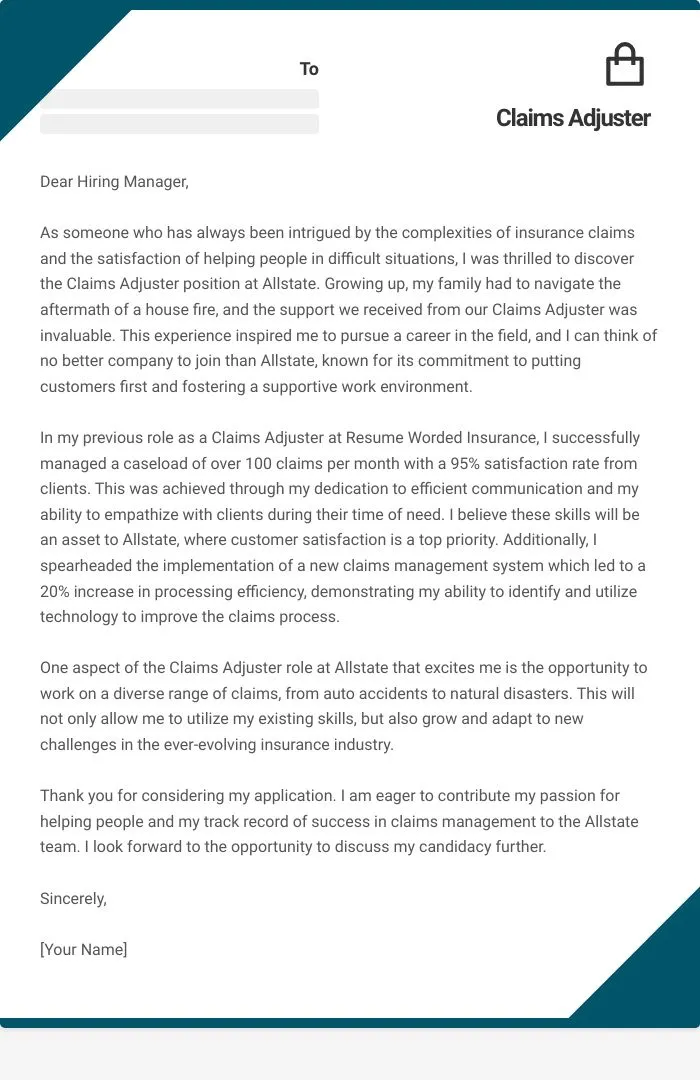What is an Insurance Adjuster Cover Letter
An insurance adjuster cover letter is a crucial document that accompanies your resume when applying for insurance adjuster positions. It serves as your introduction to the hiring manager, providing a concise overview of your qualifications, skills, and experience. Unlike your resume, which provides a factual account of your background, the cover letter allows you to personalize your application and demonstrate your enthusiasm for the role. It’s your opportunity to make a strong first impression and persuade the employer to consider you for an interview. A well-crafted cover letter can significantly increase your chances of landing an interview and ultimately securing your desired position. It is an essential element of your job application strategy.
Why is an Insurance Adjuster Cover Letter Important
The cover letter provides a platform to highlight your suitability for the specific insurance adjuster role. It enables you to showcase your understanding of the job requirements and demonstrate how your skills and experience align with the employer’s needs. A compelling cover letter allows you to differentiate yourself from other applicants by emphasizing your unique qualifications and achievements. It gives you a chance to elaborate on specific experiences, such as handling claims, assessing damages, or negotiating settlements. By illustrating your skills, you are also displaying your communication skills. A well-written cover letter proves your ability to present yourself professionally. Furthermore, it allows you to express your genuine interest in the company and the position, setting you apart from generic applications.
Key Components of an Effective Cover Letter
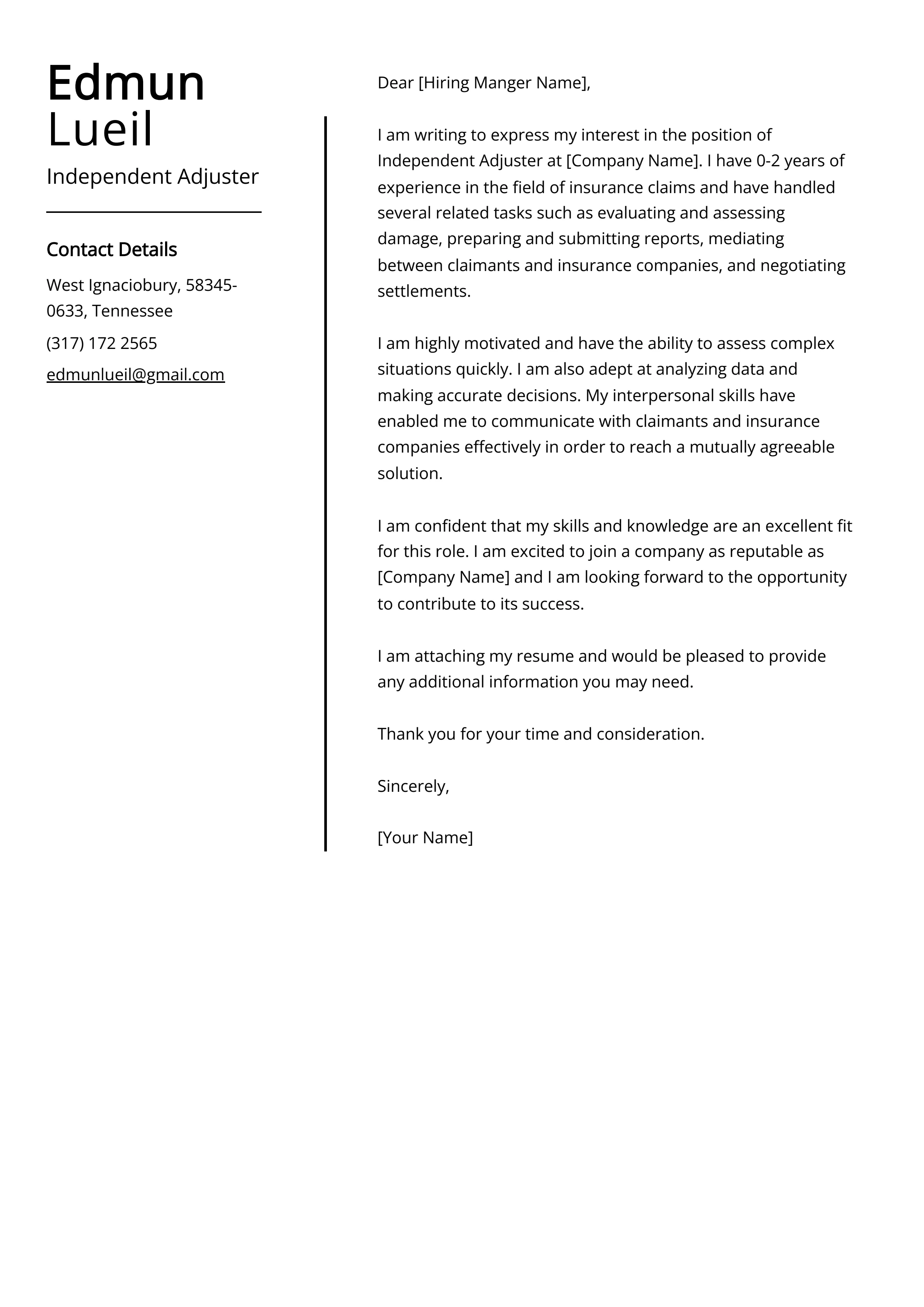
An effective insurance adjuster cover letter comprises several key components that work together to present a compelling case for your candidacy. Each section should be carefully crafted to achieve a specific purpose, from capturing the reader’s attention to highlighting your key qualifications. The structure should be logical, easy to follow, and demonstrate your professionalism. A well-structured cover letter enhances the impact of your message, making it easier for the hiring manager to assess your suitability for the role. By paying attention to these components, you can create a cover letter that leaves a lasting positive impression. It’s important to organize the key points of the letter in a clear and concise manner, each one should have their purpose.
Contact Information
At the top of your cover letter, include your full name, address, phone number, and email address. This information ensures that the hiring manager can easily contact you. Make sure the information is accurate and up-to-date. Also, consider including a link to your professional online profile, such as LinkedIn. Double-check all details before submitting your application to prevent any errors that could lead to missed opportunities.
Professional Greeting
Address the hiring manager or the specific person mentioned in the job posting. Avoid generic greetings like “To Whom It May Concern.” If the name isn’t provided, research the company’s website or LinkedIn to find the appropriate contact person. Using a personalized greeting shows you have taken the time to learn about the company and the role. It also conveys respect and attention to detail, which are valued qualities in an insurance adjuster.
Opening Paragraph
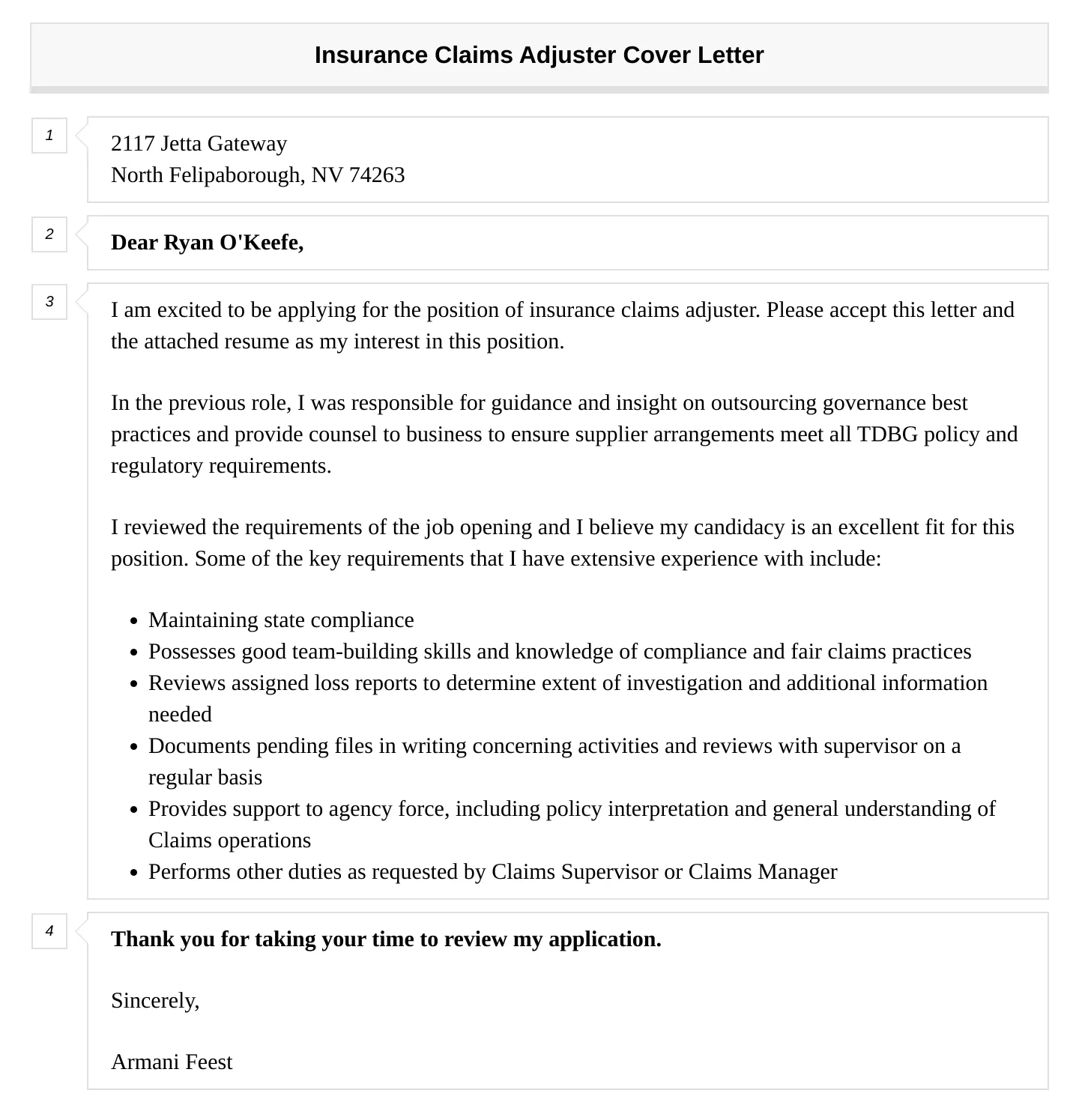
Start with a strong, attention-grabbing opening. State the position you’re applying for and where you found the job posting. Briefly mention why you are interested in the role and the company. This paragraph should immediately capture the reader’s interest and provide a clear overview of your intent. Express enthusiasm and highlight your most relevant skills. The opening sets the tone for the entire letter, so make it compelling and concise.
Highlighting Relevant Skills and Experience
This is the core of your cover letter. Detail your relevant skills and experience, using specific examples to support your claims. Mention how your previous roles have equipped you with the necessary abilities for an insurance adjuster position. Focus on skills such as claims investigation, negotiation, customer service, and knowledge of insurance policies. Tailor these points to the specific requirements outlined in the job description. Explain how you have successfully utilized these skills in past roles. Use action verbs to describe your accomplishments and quantify your achievements whenever possible.
Quantifying Achievements
Whenever possible, quantify your achievements to demonstrate your impact. Use numbers and data to illustrate your accomplishments. For example, you could mention the percentage by which you reduced claims processing time, the number of claims you successfully resolved, or the amount of money you saved the company through effective negotiation. Including quantifiable data makes your claims more credible and demonstrates the value you can bring to the role. This allows the hiring manager to gauge the impact that you have made in previous roles. It makes your cover letter more convincing and shows your capabilities.
Demonstrating Knowledge of the Insurance Industry
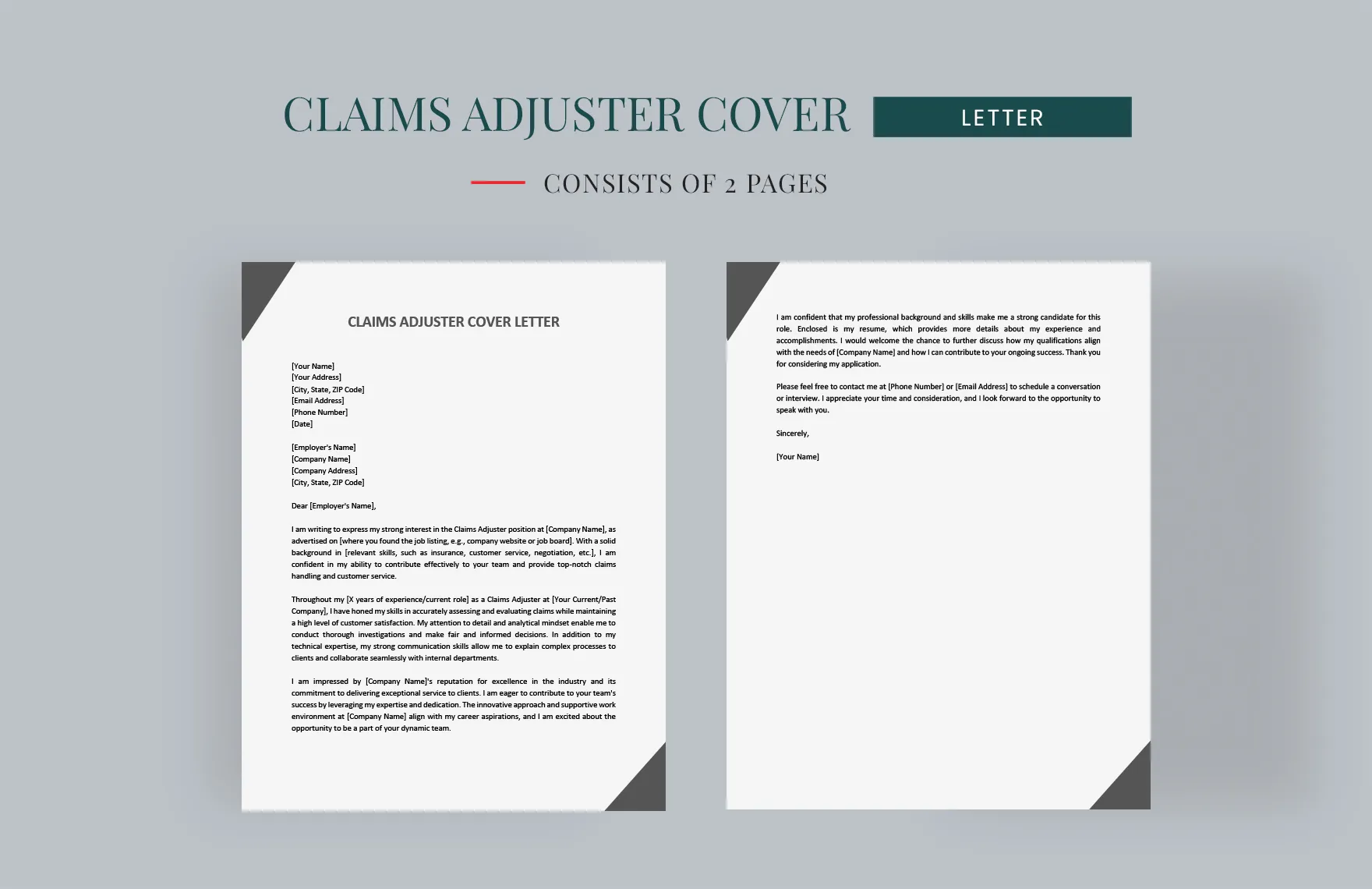
Showcase your understanding of the insurance industry and the specific challenges and responsibilities of an insurance adjuster. Mention your familiarity with different types of insurance policies, claims processes, and relevant regulations. If you have any industry certifications or licenses, be sure to highlight them. Demonstrating industry knowledge shows that you are prepared to meet the challenges of the role and can contribute to the company’s success. This knowledge is essential for gaining the trust and confidence of the hiring manager.
Expressing Enthusiasm and Interest
Convey your genuine interest in the position and the company. Explain what attracts you to the role and why you are excited about the opportunity. Show that you have researched the company and understand its mission and values. Expressing enthusiasm makes you appear more engaged and committed to the role. Highlighting your interest in the company also indicates that you are more likely to stay in the position. This is essential for the hiring manager.
Closing Paragraph
Summarize your key qualifications and reiterate your interest in the position. Thank the hiring manager for their time and consideration. Express your availability for an interview. Keep the closing concise and professional. This paragraph reinforces your suitability for the role and leaves a positive final impression. It should be a clear and effective conclusion that summarizes your main points and encourages the reader to take action.
Call to Action
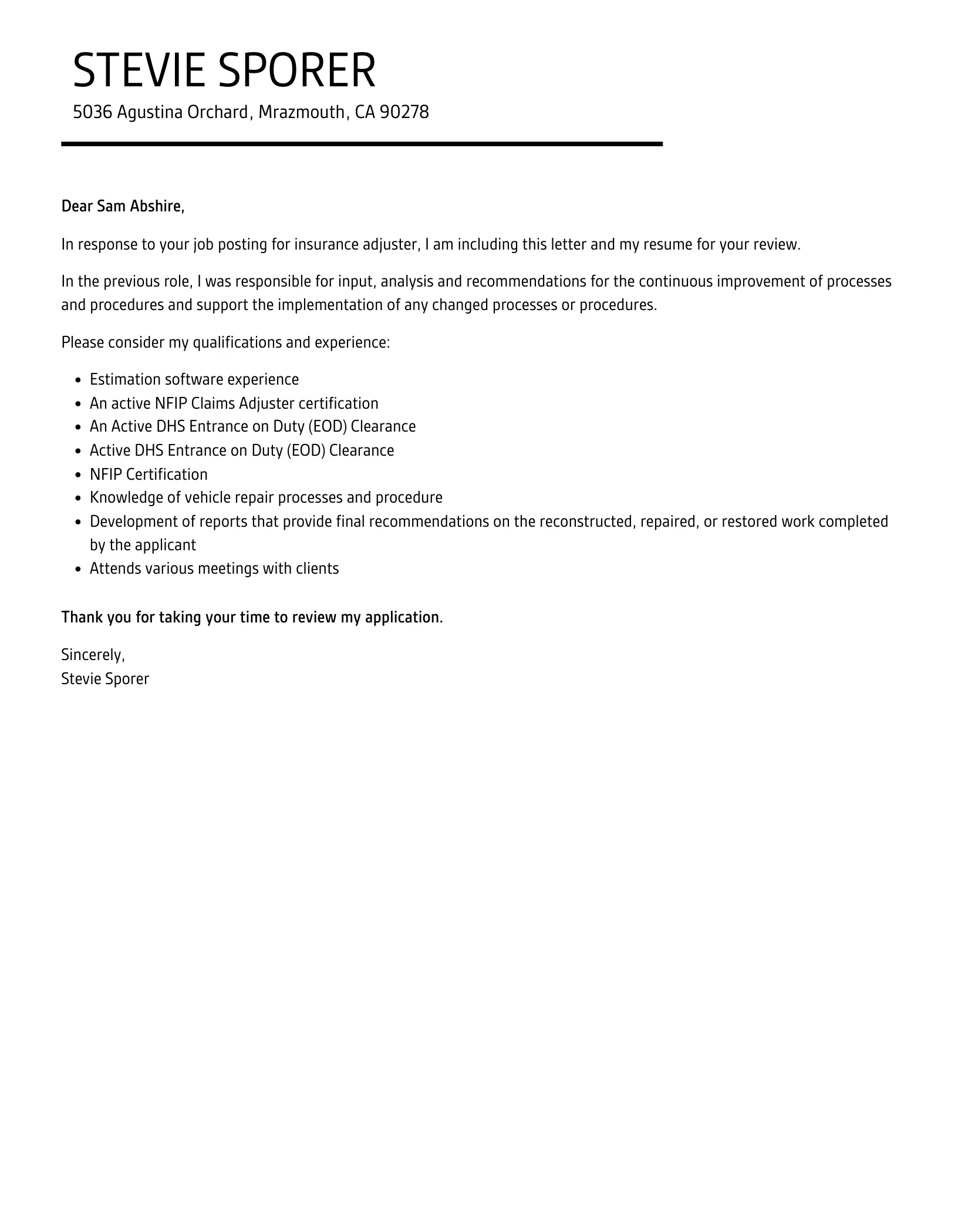
Include a clear call to action, such as requesting an interview. Make it easy for the hiring manager to contact you by providing your phone number and email address. Express your eagerness to discuss your qualifications further and to learn more about the opportunity. A call to action encourages the hiring manager to take the next step. This makes it easier for them to act on your application and move your candidacy forward.
Formatting and Presentation Tips
Formatting and presentation are crucial for making your cover letter easy to read and visually appealing. Use a professional font like Times New Roman, Arial, or Calibri, and ensure a consistent font size (11 or 12 points). Keep the margins at one inch on all sides. Use single-spacing within paragraphs and double-spacing between paragraphs. Break up large blocks of text with bullet points or short paragraphs to enhance readability. Proofread your letter carefully to ensure there are no typos or grammatical errors, which can damage your credibility. The layout should be clean, organized, and easy to scan. Well-formatted cover letters reflect attention to detail and professionalism.
Proofreading and Editing
Proofreading is essential for a professional cover letter. Thoroughly proofread your cover letter for any spelling, grammar, and punctuation errors. Use a spell checker, but also read the letter carefully, as spell checkers may not catch all mistakes. Consider having a friend or family member review your cover letter, as a fresh pair of eyes can often spot errors that you might miss. Errors can create a negative impression. It’s important to check for consistency in formatting and language. A polished cover letter demonstrates your attention to detail. Careful proofreading will ensure that your application is well-received by the hiring manager. Proper proofreading is essential for making a good impression.
Cover Letter Template for Insurance Adjusters
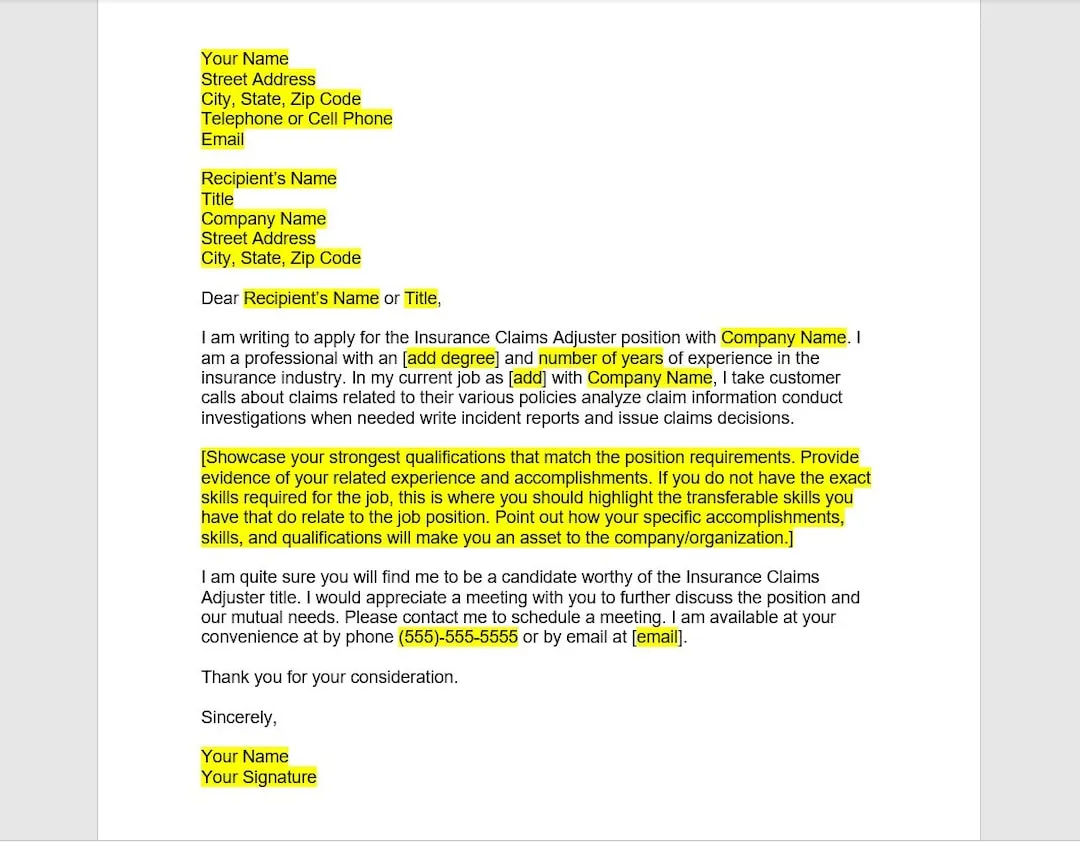
A cover letter template provides a structured framework that can help you get started. Many templates are available online. Use a template as a starting point, but tailor it to your specific qualifications and the requirements of the job. Customize the template by adding your personal information, skills, and experience. This ensures your cover letter is unique and reflects your professional image. Personalizing a template will help you showcase your suitability for the position effectively. Using a template saves time and ensures all the required information is included.
Adapt the Template
Adapting a cover letter template to match the specific job requirements and company is essential. The job description is your guide. Carefully review the job posting and identify the key skills, experiences, and qualifications the employer is seeking. Modify the template to include these elements and emphasize how you meet them. Research the company and tailor your letter to reflect their values, culture, and the specific demands of the insurance adjuster role. Make sure that your language and tone match the company’s branding. This customization shows that you have taken the time to understand the role and are a good fit for the company. Tailoring demonstrates your interest.
Examples of Strong Cover Letter Phrases
Using strong phrases can enhance the impact of your cover letter. Here are a few examples: “Proven ability to,” “Successfully managed,” “Achieved a [percentage]% increase in,” “Expert in,” “Skilled in,” “Dedicated to,” and “Proficient in.” Use these phrases to highlight your skills and accomplishments. Combine action verbs with quantifiable results to make your claims more compelling. Tailor these phrases to fit your experience. These phrases demonstrate confidence. Using impactful phrases will make your cover letter more persuasive and memorable to the hiring manager.
Tips for Tailoring Your Cover Letter
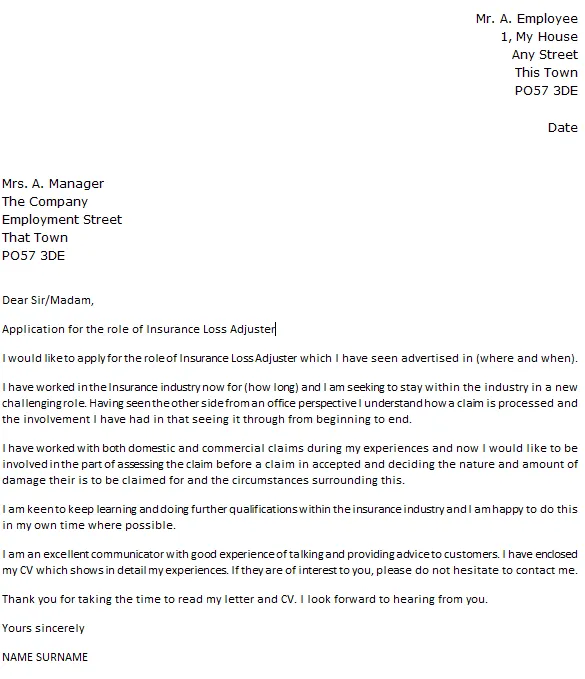
Tailoring your cover letter to each job application is critical for maximizing your chances of success. Before you begin, read the job description carefully and identify the key requirements. Then, align your skills and experiences with the requirements listed in the job description. Highlight the most relevant information and tailor your language and tone to match the company’s brand. Customizing your cover letter demonstrates that you have taken the time to understand the position and the company. It makes your application more relevant and shows the hiring manager that you are a good fit for the role. Tailoring is crucial for a successful application.
Researching the Company
Thoroughly research the company before writing your cover letter. Visit the company’s website to learn about their mission, values, and recent news. Researching helps you understand the company culture, their goals, and their current projects. This information enables you to tailor your cover letter to demonstrate your understanding of the company and why you are interested in the role. Mentioning specific company projects or initiatives shows you are invested in the company. Research allows you to align your skills and experience with the company’s needs. It makes your cover letter more relevant and demonstrates genuine interest.
Addressing Specific Job Requirements
Carefully address the specific job requirements outlined in the job description. Analyze the requirements and tailor your cover letter to demonstrate that you possess the necessary skills, qualifications, and experience. Provide specific examples that illustrate how you meet each requirement. Use keywords and phrases from the job description to show that you are a good match. This targeted approach shows the hiring manager that you understand the role and can fulfill its responsibilities. Make sure you are highlighting key areas, especially the ones the company is looking for. Ensure that your cover letter is aligned with what they are looking for.
Common Mistakes to Avoid
Avoid common mistakes that can damage your application. These errors can undermine your credibility and diminish your chances of success. Being aware of these pitfalls will help you create a more effective cover letter and increase your chances of making a positive impression on the hiring manager. Common mistakes include errors in grammar, poor formatting, and a generic approach. The best way to avoid these mistakes is to carefully review the cover letter before submitting the application. Keep these in mind to have an error-free cover letter.
Overusing Clichés and Generic Phrases
Avoid clichés and generic phrases that lack originality. Phrases like “hardworking,” “team player,” and “detail-oriented” are overused. These phrases are often seen as insincere and fail to convey your unique qualities. Instead, use specific examples and action verbs to describe your skills and experiences. Show, don’t tell, the hiring manager what you have to offer. The hiring manager will not be impressed by generic phrases. These phrases can make your cover letter sound impersonal. Replace generic phrases with detailed examples of your accomplishments.
Ignoring the Job Description
Never ignore the job description when writing your cover letter. Failing to address the specific requirements outlined in the job posting will make your application less relevant. Make sure to read the job description carefully and tailor your letter to highlight your qualifications and demonstrate how you meet the requirements. This shows that you understand the role and are capable of fulfilling its responsibilities. Address the job description’s requirements to show you understand the role. Align your skills and experiences with the job requirements to show you are a great fit. Ignoring the job description can result in your application being overlooked.
Failing to Proofread
Proofreading is essential for a professional cover letter. Failure to proofread will lead to spelling, grammar, and punctuation errors. These errors damage your credibility and make you appear careless. Always thoroughly proofread your cover letter before submitting it. Consider having someone else review it, as a fresh pair of eyes can often catch mistakes you might miss. Proofreading ensures that your cover letter is polished and error-free. Always take the time to proofread your cover letter thoroughly. Double-check the content for errors. The attention to detail will leave a positive impression on the hiring manager.
Submitting a Generic Cover Letter
Avoid submitting a generic cover letter that is not tailored to the specific job and company. A generic letter will not impress the hiring manager and will likely be overlooked. Demonstrate that you have researched the company and understand the role. Customize your cover letter to match the specific requirements and highlight your relevant skills and experience. A personalized cover letter shows that you are genuinely interested in the position. Tailor your letter to show you have taken the time to understand the company. This personal touch makes your application stand out and improves your chances of securing an interview.
